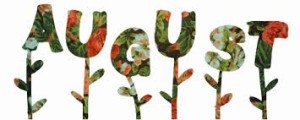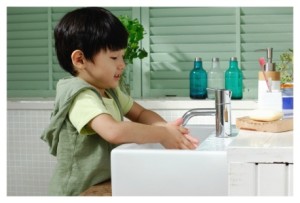
Dear Chesterbrook Families,
We hope that you have been enjoying your summer just as much as we have been here at Chesterbrook!! It has been a pleasure getting to know each and every one of you during this past month.
During the past month our students have been busy immersing themselves in the Links to Learning curriculum as they learned about the Arctic, the Rainforest, and what it takes to be a true Super Hero. This month we look forward to learning about what it is like to be a part of the Jr. Olympics and how we can “pay it forward” in our everyday lives. We will conclude our summer with and End of the Summer Party on August 21st at 3 p.m.
We are also hosting our Brax Spirit cup fundraiser. This will be starting July 31st and run through August 14th. Please let me know if you have any questions about ordering these great cups. They are awesome for using outside or for just watching a game. We have samples in the lobby for you to explore. Thank you so much in advance for your support!
Here’s to another great month here at Chesterbrook Academy in Denver!
Thank you all for being the amazing parents you are everyday!
Sincerely,
Jac-Lynn Johnson
Principal
Reestablishing Routines for Your Preschooler
Maintaining Order & Staying on Track
As we reach the end of summer, now is a great time to reestablish comforting routines for your preschooler. Routines help children build self-confidence and independence, cope with transitions, and gain a better understanding of  the world around them.
the world around them.
Our Links to Learning curriculum promotes students’ social and emotional development, which is necessary for following directions and demonstrating self-control. Our teachers focus on the importance of healthy living and safety routines in the Wellness component of our curriculum.
Here are some examples of ways we establish routines in the classroom, as well as ideas for you and your child to do at home.
TODDLERS (ages 1-2):
In the classroom: Naptime gives children an opportunity to recharge and reboot. Our toddlers transition from napping in cribs to napping in cots. Teachers schedule naps at the same time and in the same area of the classroom every day. Soothing music is played to help toddlers wind down.
At home: Talk with your child’s teacher about the naptime routine at school. Minimize naptime battles by attempting to maintain the same routine at home.
Recommended reading: Naptime by Elizabeth Verdick
BEGINNERS (ages 2-3):
In the classroom: Around age two, children begin to learn basic self-help skills such as dressing themselves. Our Beginner students practice snaps and zippers, and are encouraged to complete basic sequences like putting on socks before shoes.
At home: Offer your child a choice during routines in order to increase his interest in the activity. For example, lay out two outfit options for him to wear. Allow him to choose the outfit he prefers. Give him ample time to dress himself before offering assistance. Praise every attempt.
Recommended reading: Let’s Get Dressed by Caroline Church
INTERMEDIATES (ages 3-4):
In the classroom: Teachers focus on the importance of sleep in the Wellness component of our curriculum. Students read and act out We’re Going on a Bear Hunt by Helen Oxenbury and Michael Rosen. They discuss why the bear was sleeping, and why sleep is important.
At home: Create a bedtime routine for your child. For example, bathe, brush teeth, read a story, go to sleep. Follow the same sequence of events at the same time and in the same order every night.
Recommended reading: The Going-to-Bed Book by Sandra Boynton
PRE-K/PRE-K 2 (ages 4-5):
In the classroom: Our older students follow an arrival routine at the start of every school day. They sign themselves in, say goodbye to their parents, and put away their belongings. Students learn rhymes and songs to help remind themselves what to do when they enter the classroom.
At home: Mornings are critical for setting the tone for a successful and positive day. Establish a morning routine for your child with a maximum of four steps. For example, get dressed, brush hair, brush teeth, eat breakfast.
Recommended reading: Waking Up is Hard to Do by Neil Sedaka & Howard Greenfield
Following routines helps children develop the habits of responsibility that will be crucial for their future success and well-being. Kindergarten students are expected to follow instructions, listen to their teacher and complete specific tasks. By setting routines in the preschool years, your child will be better prepared as he enters elementary school and beyond.
– Lauren Starnes, PhD – Director of Early Childhood Education

August News!
Dear Chesterbrook Families,
We hope that you have been enjoying your summer just as much as we have been here at Chesterbrook!! It has been a pleasure getting to know each and every one of you during this past month.
During the past month our students have been busy immersing themselves in the Links to Learning curriculum as they learned about the Arctic, the Rainforest, and what it takes to be a true Super Hero. This month we look forward to learning about what it is like to be a part of the Jr. Olympics and how we can “pay it forward” in our everyday lives. We will conclude our summer with and End of the Summer Party on August 21st at 3 p.m.
We are also hosting our Brax Spirit cup fundraiser. This will be starting July 31st and run through August 14th. Please let me know if you have any questions about ordering these great cups. They are awesome for using outside or for just watching a game. We have samples in the lobby for you to explore. Thank you so much in advance for your support!
Here’s to another great month here at Chesterbrook Academy in Denver!
Thank you all for being the amazing parents you are everyday!
Sincerely,
Jac-Lynn Johnson
Principal
Reestablishing Routines for Your Preschooler
Maintaining Order & Staying on Track
As we reach the end of summer, now is a great time to reestablish comforting routines for your preschooler. Routines help children build self-confidence and independence, cope with transitions, and gain a better understanding of the world around them.
the world around them.
Our Links to Learning curriculum promotes students’ social and emotional development, which is necessary for following directions and demonstrating self-control. Our teachers focus on the importance of healthy living and safety routines in the Wellness component of our curriculum.
Here are some examples of ways we establish routines in the classroom, as well as ideas for you and your child to do at home.
TODDLERS (ages 1-2):
In the classroom: Naptime gives children an opportunity to recharge and reboot. Our toddlers transition from napping in cribs to napping in cots. Teachers schedule naps at the same time and in the same area of the classroom every day. Soothing music is played to help toddlers wind down.
At home: Talk with your child’s teacher about the naptime routine at school. Minimize naptime battles by attempting to maintain the same routine at home.
Recommended reading: Naptime by Elizabeth Verdick
BEGINNERS (ages 2-3):
In the classroom: Around age two, children begin to learn basic self-help skills such as dressing themselves. Our Beginner students practice snaps and zippers, and are encouraged to complete basic sequences like putting on socks before shoes.
At home: Offer your child a choice during routines in order to increase his interest in the activity. For example, lay out two outfit options for him to wear. Allow him to choose the outfit he prefers. Give him ample time to dress himself before offering assistance. Praise every attempt.
Recommended reading: Let’s Get Dressed by Caroline Church
INTERMEDIATES (ages 3-4):
In the classroom: Teachers focus on the importance of sleep in the Wellness component of our curriculum. Students read and act out We’re Going on a Bear Hunt by Helen Oxenbury and Michael Rosen. They discuss why the bear was sleeping, and why sleep is important.
At home: Create a bedtime routine for your child. For example, bathe, brush teeth, read a story, go to sleep. Follow the same sequence of events at the same time and in the same order every night.
Recommended reading: The Going-to-Bed Book by Sandra Boynton
PRE-K/PRE-K 2 (ages 4-5):
In the classroom: Our older students follow an arrival routine at the start of every school day. They sign themselves in, say goodbye to their parents, and put away their belongings. Students learn rhymes and songs to help remind themselves what to do when they enter the classroom.
At home: Mornings are critical for setting the tone for a successful and positive day. Establish a morning routine for your child with a maximum of four steps. For example, get dressed, brush hair, brush teeth, eat breakfast.
Recommended reading: Waking Up is Hard to Do by Neil Sedaka & Howard Greenfield
Following routines helps children develop the habits of responsibility that will be crucial for their future success and well-being. Kindergarten students are expected to follow instructions, listen to their teacher and complete specific tasks. By setting routines in the preschool years, your child will be better prepared as he enters elementary school and beyond.
– Lauren Starnes, PhD – Director of Early Childhood Education